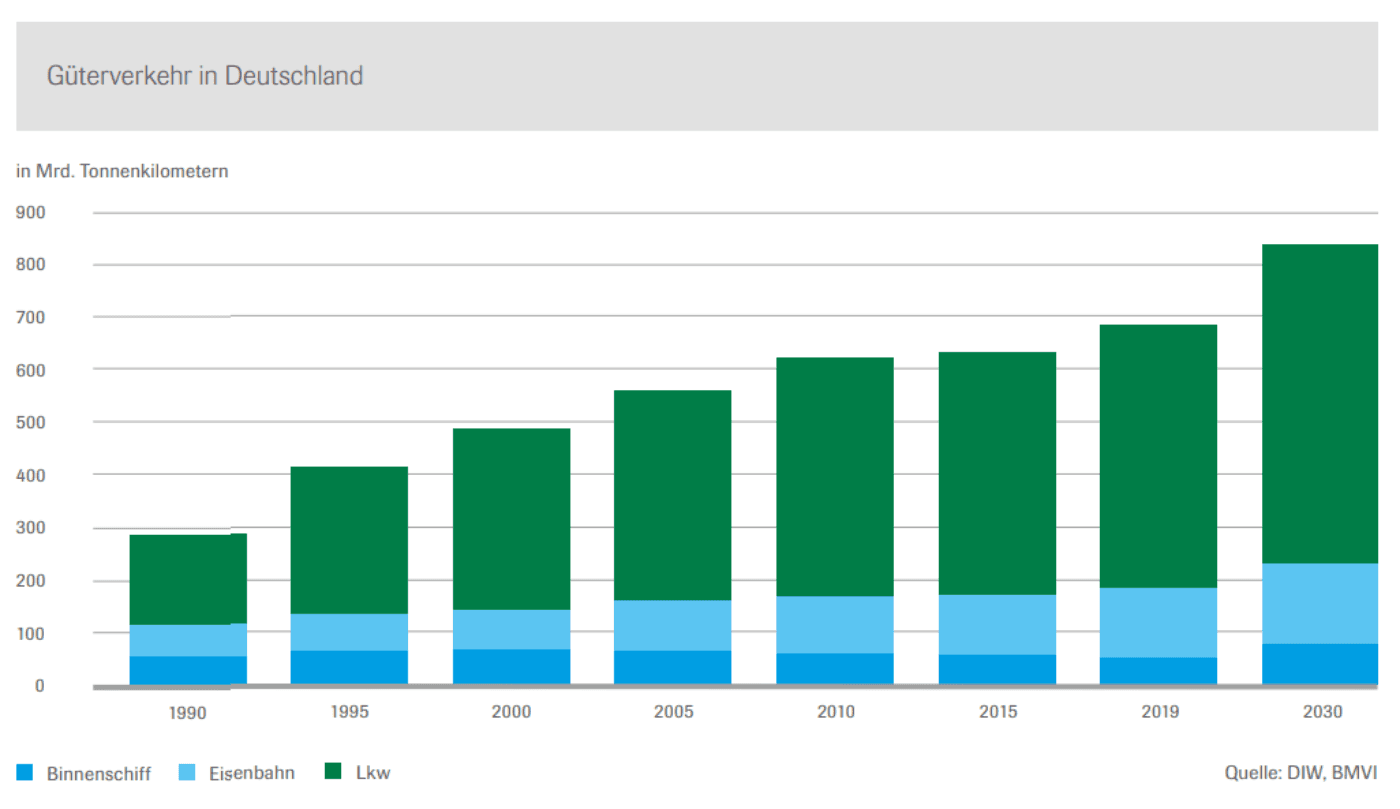- Topics
- Mobility policy
- Freight transport

Mobility policies
The importance of commercial vehicles for freight transport
In 2019 over 73% of the total transport was handled on the road — rather than rail and waterways. Commercial vehicles are, and remain key to freight transportation. Making it all the more important that the conditions are right.
In 2019 over 73% of the total transport was handled on the road — rather than rail and waterways. Commercial vehicles are, and remain key to freight transportation. Making it all the more important that the conditions are right.
- Topics
- Mobility policy
- Freight transport
The backbone of freight transport
In 2019, 502.7 billion ton-kilometers of traffic were handled on German roads. This constituted over 73% of the total transport handled by road, rail, and waterways combined, and shows that the backbone of freight transport continues to be commercial vehicles. With this percentage, Germany roughly corresponds to the European average. Compared with the previous year, road transport grew by 0.4% in 2019 – roughly in line with overall freight transport over land. Total freight transport increased by only 0.5% in 2019 – due to the weak economy – and it can be assumed that freight traffic for all modes of transport will have experienced a drastic slump in 2020 due to the corona crisis. However, with the subsequent normalization of economic development, freight transport will also return to its former growth.
The long-term forecast prepared by the German Federal Ministry of Transport in 2014 estimates that road freight transport will reach a level of 607 billion ton-kilometers by 2030. That would be an increase of more than 20% compared with 2019, which means that the current market share for trucks will also remain roughly stable. The truck owes its importance in large part to its flexibility: Only the truck can reach any destination, from the loading bay to the front door. It also has an economic and ecological advantage when transporting small consignments and over shorter distances. Railroads, by contrast, generally only become economically viable for freight transport when payloads exceed 300 metric tons.
Similarly, combined road-rail transport only makes sense for distances well over 300 kilometers. However, almost 80% of road freight is transported over distances of 150 kilometers. This results in a division of tasks between the modes of transport: Trucks are ideal for transporting low volumes over short distances, while rail and in-land waterways are more competitive for high volumes over long distances. One good example of this is the transport of brand-new cars: The German automotive industry uses rail in the main run to transport well over 50% of its newly manufactured vehicles. Because of their system-specific advantages and disadvantages, the modes of transport compete far less with one another than is usually assumed. Rather, they complement each other.
In 2017, the EU Commission presented proposals for amending the toll directive ("Eurovignette Directive"). However, no agreement has yet been reached on this among the Council of Ministers. The Commission's proposals are to be evaluated differently in each case; among other things, they provide for a truck toll to apply to all commercial vehicles with a gross vehicle weight of over 3.5 tons from 2020. This would mean that tolls in Germany would also have to be extended to trucks under 7.5 tons, and buses. However, since the share of international traffic for these vehicles is significantly lower than for heavy trucks, there is no sign here of the need for European harmonization. It would therefore be better to leave toll-setting for these groups of vehicles to the discretion of the EU member states in accordance with the subsidiarity principle. This should also apply to the question as to whether time- or distance-based tolls should be levied.
The EU Commission's proposal to include congestion costs in the toll should also be viewed critically. Congestion costs in the form of lost time are already borne by users themselves, and including them in the toll would lead to an unjustified double burden. In addition, the Commission proposal envisages a neutral spreading of the toll amount according to CO2 emissions, which is to be welcomed. It can serve as an additional incentive to invest in vehicles and technologies that are fuel-efficient and low in CO2, and above all, zero-emission. Such a differentiation has already proven its worth in the past: In recent years, different tolls according to the EURO levels have led to fleets being modernized with low-emission vehicles. This is why the EU should now push ahead with a CO2-oriented commercial vehicle toll, which will then be introduced in Germany. With its national climate protection program passed in 2019, the German government has announced that it will add a CO2 surcharge as part of the further development of the truck toll. This could have a larger effect on incentives for investment in zero- or low-emission vehicles. In any case, every effort should be made to implement the CO2 toll in Germany in 2023, as announced in the climate protection program.

